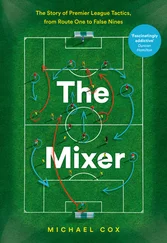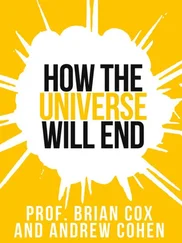Trapattoni’s second campaign was less successful, and was most notable for his infamous press-conference rant in broken German, during which he screamed into the microphone, justifying his decision to omit Scholl, a classy playmaker, and Mario Basler, an unpredictable winger, neither of whom had been pulling their weight defensively. Trapattoni was keen to stress that Bayern played positive football in his diatribe. ‘No team in Germany plays attacking football like Bayern,’ he declared. ‘In the last game, on the pitch we had three strikers – Giovane Élber, Carsten Jancker and Alexander Zickler. We mustn’t forget Zickler! Zickler is a striker, more than Scholl, more than Basler!’ Even in this irritated state, Trapattoni felt compelled to underline that his selection wasn’t too defensive, too Italian.
In Italy itself, of course, no one had a problem with defensive football, and Lippi’s Juventus won the 1996/97 Serie A title in stereotypically unspectacular fashion. In their 34 matches they only scored the joint-fourth highest number of goals, but they conceded the fewest. They won fewer matches than second-placed Parma, but Parma lost four more. Juventus weren’t about scoring goals and winning matches, they were about not conceding goals, and therefore not losing matches.
Juve’s centre-back duo of Ciro Ferrara and Paolo Montero were hugely dominant, although both found themselves in trouble with referees. Montero was sent off away at Napoli and Cagliari, and both were suspended for the home contest with Milan in mid-November, a furiously contested game, delayed because of heavy downpour in Turin, with the touchlines needing to be repainted beforehand. Juventus, as ever, coped without key players, and the makeshift partnership of Sergio Porrini and Alessio Tacchinardi, a right-back and a central midfielder respectively, excelled against Roberto Baggio and George Weah. It finished goalless.
There were starring performances from Zidane, who recovered from a slow start to dominate Juve’s attacking play, and Del Piero, who suffered from injuries but also netted some crucial goals, including the winner in the Intercontinental Cup victory over River Plate. Lippi evolved his default system from the previous season, shifting from 4–3–3 to 4–4–2, which became 4–3–1–2 with Zidane shifting forward into the number 10 position. As always, Lippi used his functional players excellently. The wider midfielders, often Di Livio and Vladimir Jugović, played busy roles, tucking inside to support Didier Deschamps, who became Juve’s primary holding midfielder after Paulo Sousa’s move to Dortmund. Genuine width came from the left-back, usually Pessotto, and Juve shifted towards a three-man defence in possession with the right-back – Porrini or Torricelli – tucking inside, a trademark move from Italy’s old catenaccio system.
Lippi’s policy of switching full-backs, as witnessed in the Champions League Final against Ajax, was again used after 20 minutes in a 2–1 victory over Perugia in February. Porrini, playing as a right-sided centre-back alongside Ferrara, departed through injury but was replaced by Iuliano, who was left-footed and therefore played to the other side of Ferrara. Lippi decided Iuliano needed more protection, so switched Torricelli from right-back to left-back, and Pessotto made the opposite move. Again, only an Italian side would switch their full-backs so readily.
Lippi was never afraid to make early defensive changes, sacrificing Pessotto after 30 minutes against a rampant Udinese because he needed extra pace. Di Livio, a right-midfielder in the previous game, came on at left-back. Converting energetic right-sided midfielders into rampaging left-backs became something of a Lippi speciality; in a second stint with Juventus he did something similar with Gianluca Zambrotta, who became the world’s best in that position, and played both right-back and left-back under Lippi during the World Cup triumph in 2006.
Even when Lippi’s Juventus thrashed the opposition, they often did so efficiently rather than joyfully. In the 6–1 battering of PSG in the European Supercup first leg at a snowy Parc des Princes, Juve’s first four goals came from set-pieces. In fairness, they also defeated a shambolic Milan side by the same scoreline at San Siro in an incredibly dominant display, while the season’s most impressive victory was the 4–1 Champions League semi-final victory over familiar foes Ajax.
In the previous year’s final, Juventus were superior but only won after a shoot-out. This time they were rampant, underlining Italy’s dominance over Holland. Lippi, typically, sprung a tactical surprise in his 4–3–1–2 by using Ferrara and Iuliano, two centre-backs, in the full-back positions either side of Montero and Tacchinardi, forming a formidable, physically dominant defensive quartet. Up front, Juve pressed energetically, with Zidane joining Bokšić and Vieri in shutting down Danny Blind, Mario Melchiot and Frank de Boer. Ajax’s build-up play was disrupted and they uncharacteristically resorted to long balls, which played into the hands of Juve’s four centre-backs. Juventus, meanwhile, played direct football excellently, constantly launching the ball for Vieri and Bokšić, their strongest forward partnership, to batter Ajax’s defenders.
Zidane, meanwhile, ran the show. Supported by the positional discipline of Deschamps, and the energy of Di Livio and Attilio Lombardo – who switched flanks midway through the first half – the Frenchman was superb. In the first half he collected possession 40 yards from goal, advanced with the ball then slowed his dribble, before jinking past three challenges towards the left flank. He then crossed for Vieri, whose shot was deflected wide. Zidane swung in the corner, and Lombardo headed home. The Frenchman was involved in the build-up to the second, scored by Vieri. For the third, Zidane’s speed allowed him to intercept the ball in midfield and he launched a counter-attack, wrongfooted Danny Blind with a stepover and allowed substitute Amoroso to tap into an empty goal. Zidane scored the fourth himself, receiving a pass from Didier Deschamps and faking a shot to leave Edwin van der Sar on the ground, before finishing into an open goal. ‘He is, without a doubt, the greatest player I ever coached,’ said Lippi. ‘And I also think he’s the greatest player of the next 20 years. The previous 20 it was Maradona, and the next twenty, Zidane. I am convinced of that.’
The Ajax victory was arguably Juventus’s greatest under Lippi, and highlighted the three areas in which Italian football had an advantage over Dutch football: tactical flexibility, physical power and a standout individual performance from a world-class talent. ‘Zidane was different class, even in such a remarkable team,’ declared a defeated Louis van Gaal. ‘They are a great team with great skills, a pleasure to watch. I’ll repeat what I said after the first leg: I have never met opponents who beat us like Juventus did.’
Juve were surprisingly defeated 3–1 in the final by Dortmund, who were better prepared for Juventus’s physicality and nullified Zidane through Paul Lambert’s excellent marking. Yet the game could have been very different; Juventus created the better chances, twice hit the woodwork and Bokšić had a goal controversially disallowed. After Juve found themselves 2–0 down at half-time, they switched from 4–3–1–2 to 4–3–3, with Del Piero on for Di Livio. This forced Dortmund to retreat, and Del Piero’s backheeled goal from Bokšić’s cross seemed set to launch a comeback. Soon afterwards, however, 20-year-old Dortmund youth product Lars Ricken was summoned in place of Stéphane Chapuisat, and took all of 16 seconds to make it 3–1, scoring with his first touch after streaking away on a counter-attack and producing a remarkable long-range shot that curled around Angelo Peruzzi. It was a shock win. ‘Having watched that final as a spectator, the only sentiment I have is anger,’ said the injured Conte. ‘Because the weaker side won, and because there’s nothing you can do to set it straight – nothing except turn out again in next season’s Champions League, and win it.’
Читать дальше












